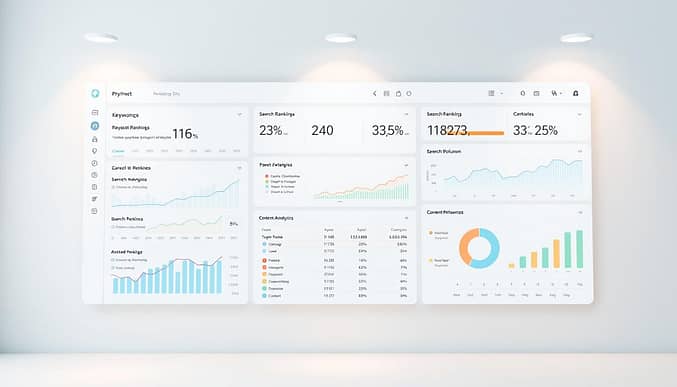Keyword Research Templates: Your Ultimate Guide
Organizing your SEO strategies just got easier. With constantly shifting search algorithms and endless data to analyze, marketers need tools to simplify their workflow. That’s where structured frameworks come into play, offering clarity in a chaotic digital landscape.
This guide provides a free, customizable solution (available in Excel and Google Sheets) to help you identify high-value terms efficiently. Whether you’re launching a new campaign or optimizing existing content, these frameworks turn scattered ideas into actionable plans. No more juggling spreadsheets or guessing which metrics matter most.
Gone are the days of relying solely on outdated tools like the Google Keyword Planner. Modern strategies demand deeper insights—search volume, competition levels, and user intent—all consolidated into one place. Our approach blends traditional methods with cutting-edge techniques, ensuring you stay ahead of competitors.
You’ll learn how to prioritize terms based on relevance and traffic potential while avoiding common pitfalls. Even if you’re new to SEO, step-by-step examples and real-world scenarios make the process accessible. Let’s transform how you discover opportunities and drive organic growth.
Key Takeaways
- Streamline your SEO workflow with free, easy-to-use organizational tools
- Combine historical methods with modern metrics for better decision-making
- Identify high-potential terms using competition and search volume data
- Adapt strategies for beginners and experienced marketers alike
- Access downloadable templates compatible with popular platforms
Introduction to Keyword Research Templates
Centralizing your SEO data can transform chaotic efforts into clear strategies. Structured frameworks help marketers cut through noise by organizing metrics like search volume and competition. These systems turn raw information into actionable insights without overwhelming users.
What Are SEO Organization Frameworks?
A keyword research template acts as a blueprint for managing terms that drive traffic. It combines metrics like search volume, relevance, and difficulty into one dashboard. This lets teams prioritize high-impact phrases while filtering out low-value options.

Modern versions go beyond basic spreadsheets. They automatically update rankings, track competitor movements, and suggest related topics. For example, tools like Semrush now integrate directly with these frameworks, saving hours of manual work.
From Spreadsheets to Smart Systems
Early SEO efforts relied on handwritten lists and Excel sheets. Today’s solutions connect with analytics platforms, offering real-time data syncing. Below is a comparison of how methods have advanced:
| Era | Tools Used | Key Features |
|---|---|---|
| 2000s | Excel | Manual entry, static data |
| 2010s | Google Keyword Planner | Basic volume metrics |
| 2020s | Semrush/Ahrefs | AI suggestions, competitor tracking |
This shift allows marketers to spot trends faster. Instead of guessing which topics perform, they can align content with verified search patterns. Centralized dashboards also simplify collaboration across teams, reducing duplicated efforts.
Benefits of Using a Keyword Research Template
Structured frameworks transform SEO chaos into actionable clarity. By consolidating metrics and strategies, these systems help teams cut through data overload while maintaining campaign precision.
Simplifying Data Organization
Managing search terms manually often leads to missed opportunities. A centralized approach eliminates scattered spreadsheets by merging search volume, competition scores, and user intent metrics. “This template brings together all those different approaches into one place,” ensuring teams follow a clear process to evaluate terms effectively.

Structured lists improve accuracy when assessing keyword difficulty. When search volume and competition data appear side-by-side, marketers make faster decisions about which target keywords to prioritize.
| Manual Process | Template-Driven Approach |
|---|---|
| Multiple disconnected files | Single source of truth |
| Time-consuming updates | Auto-synced metrics |
| Guessed priorities | Data-backed rankings |
Enhancing Collaboration and Customization
Cloud-based tools like Google Sheets enable real-time teamwork. Editors, writers, and SEO specialists can simultaneously refine lists while tracking changes. Custom columns let teams add niche-specific filters—like local search modifiers or product categories.
Adaptable frameworks save hours typically wasted on repetitive tasks. Whether optimizing single pages or entire site sections, everyone works from the same updated metrics. This consistency prevents misaligned efforts across departments.
Ultimately, a well-designed template becomes the backbone of page optimization strategies. It provides both individuals and teams with a scalable system that grows with their SEO ambitions.
Practical Steps to Implement a Keyword Research Template
Building a solid SEO foundation starts with structured execution. Transform brainstorming sessions into measurable actions using a free customizable template. This approach turns fragmented ideas into targeted campaigns through methodical organization.
Identifying Seed Keywords and Themes
Begin with core topics your audience cares about. For a fitness blog, terms like “home workouts” or “nutrition plans” act as seeds. Group related phrases into themes—like “beginner exercises” or “meal prep tips”—to create content clusters.
Use free tools like AnswerThePublic to uncover question-based phrases. Input these into your template’s “seed” column. Prioritize terms matching user intent—whether informational, commercial, or navigational.
Expanding and Analyzing Your Keyword List
Feed seed phrases into platforms like Semrush or Ahrefs to generate hundreds of variations. Filter results by search volume and competition scores. Focus on mid-range opportunities where traffic potential outweighs ranking difficulty.
| Tool | Key Features | Best For |
|---|---|---|
| Google Keyword Planner | Basic volume metrics | Budget-friendly starters |
| Semrush | Competitor gap analysis | Advanced campaigns |
| Ahrefs | Difficulty scoring | Precision targeting |
Update your template’s “metrics” section with this data. Highlight terms with buyer intent for product pages or informational phrases for blog posts. Regular reviews ensure your list evolves with search trends.
This process creates a living document that adapts to market shifts. By aligning phrases with user behavior, you’ll craft content that ranks and resonates.
Optimizing Your SEO Strategy with keyword research templates
Maximizing SEO performance requires more than just data collection—it demands strategic alignment. By connecting insights to execution, you transform raw numbers into growth engines. Let’s explore how to refine your approach using measurable criteria and user-focused content.
Evaluating Keywords Using Essential Metrics
Not all terms deserve equal attention. Prioritize phrases with balanced search volume and manageable competition. High-traffic terms often face intense rivalry, while low-competition options may lack sufficient demand.
| Metric | High Value | Low Value |
|---|---|---|
| Search Volume | 1,000+ | <200 |
| Difficulty | <40 | >70 |
| Competitors | 3-5 | 10+ |
Focus on relevance first. A term with 5,000 searches but zero connection to your site wastes resources. Metrics guide decisions but shouldn’t override common sense.
Aligning Content with User Search Intent
Visitors want answers, not just keywords. Match content formats to search purposes:
- Blog posts for “how-to” questions
- Product pages for commercial queries
- Guides for deep-dive topics
“Optimizing for intent bridges the gap between rankings and revenue.”
Analyze top-ranking pages for your target phrases. Do they inform, compare, or sell? Mirror their structure while adding unique ideas to stand out.
Integrating Keyword Data into Your Page Optimization
Transform lists into action by embedding terms naturally:
- Place primary phrases in H1 tags and meta descriptions
- Use secondary terms in subheaders (H2-H4)
- Weave related synonyms into body content
Group topic clusters into site sections for thematic authority. Update old posts with fresh data from your template to maintain relevance. This dual approach boosts traffic while keeping visitors engaged longer.
Conclusion
Mastering SEO demands precision and smart tools. By combining structured frameworks with data-driven analysis, you turn complex processes into clear roadmaps. This guide has shown how to prioritize high-value terms, align content with user needs, and track performance metrics that matter.
Effective strategies start with organization. Centralized systems simplify tracking search volume, competition, and intent—key factors for outperforming competitors. Platforms like Google Ads or Meta Ads benefit immensely when paired with accurate copy and optimized meta tags.
For teams seeking ready-made solutions, explore tested keyword frameworks that accelerate planning. These tools help businesses refine their options, target the right customers, and measure results consistently.
Remember: sustainable growth comes from adapting. Compare your current approach with the methods outlined here. Update on-page elements regularly, and let metrics guide your decisions. When done right, this way of working becomes a competitive edge that drives both traffic and conversions.
Now’s the time to act. Apply these practices to build a strategy that evolves with search trends—and watch your business climb the ranks.